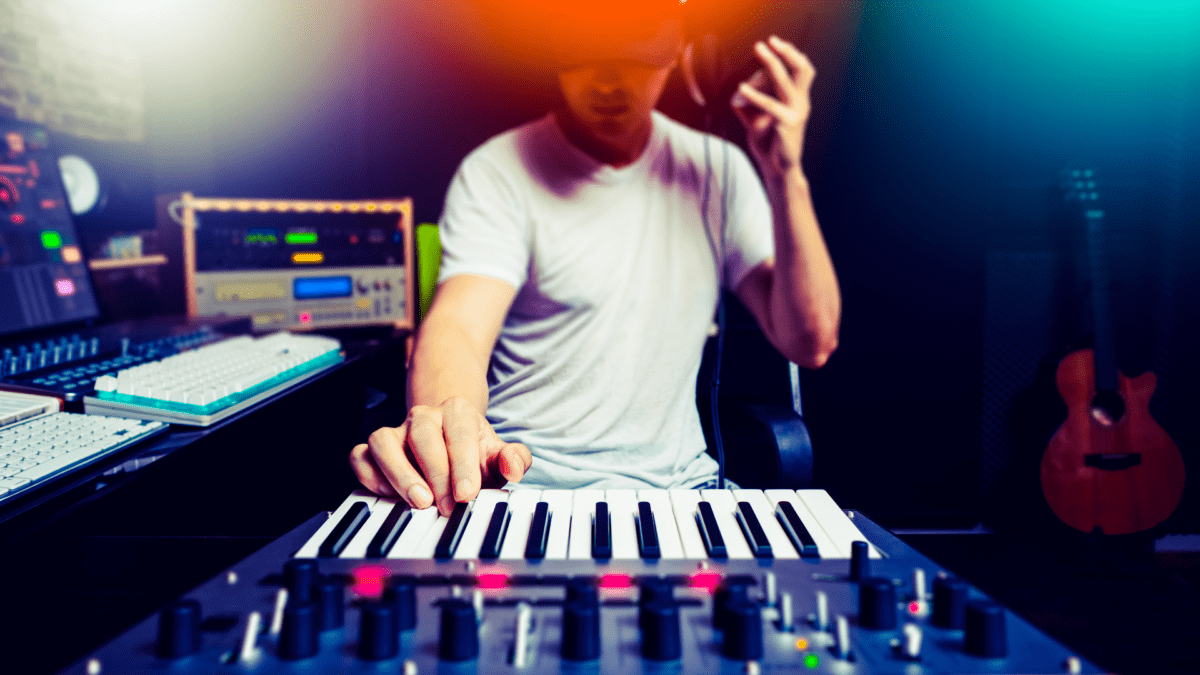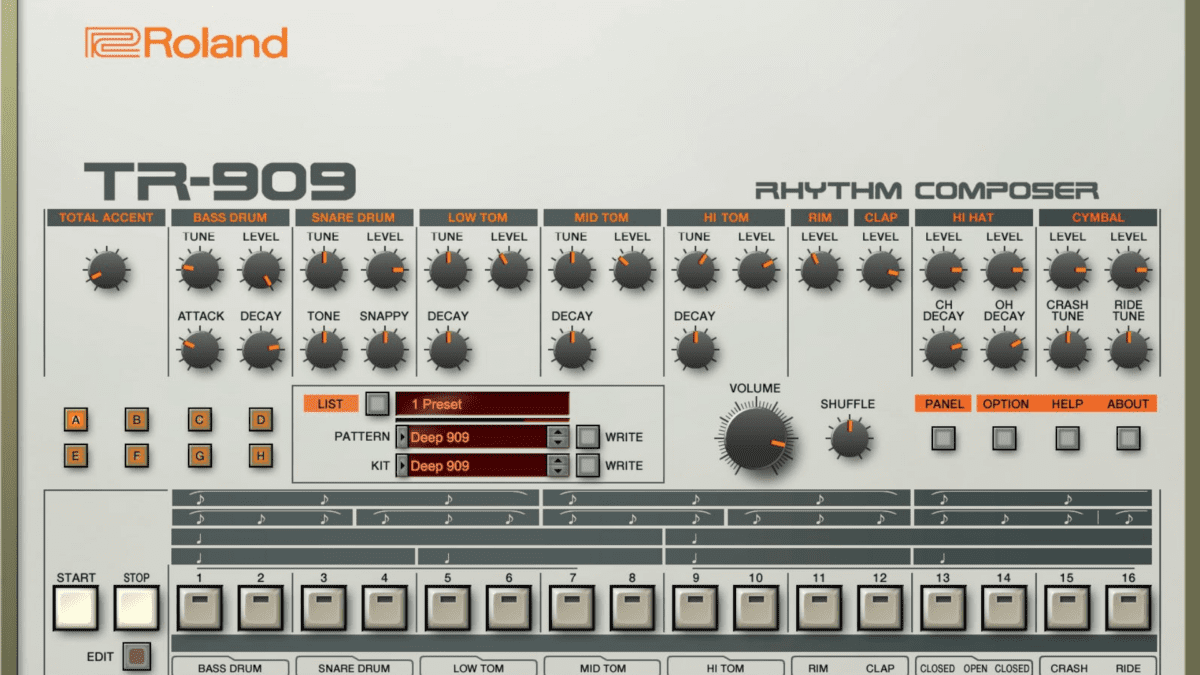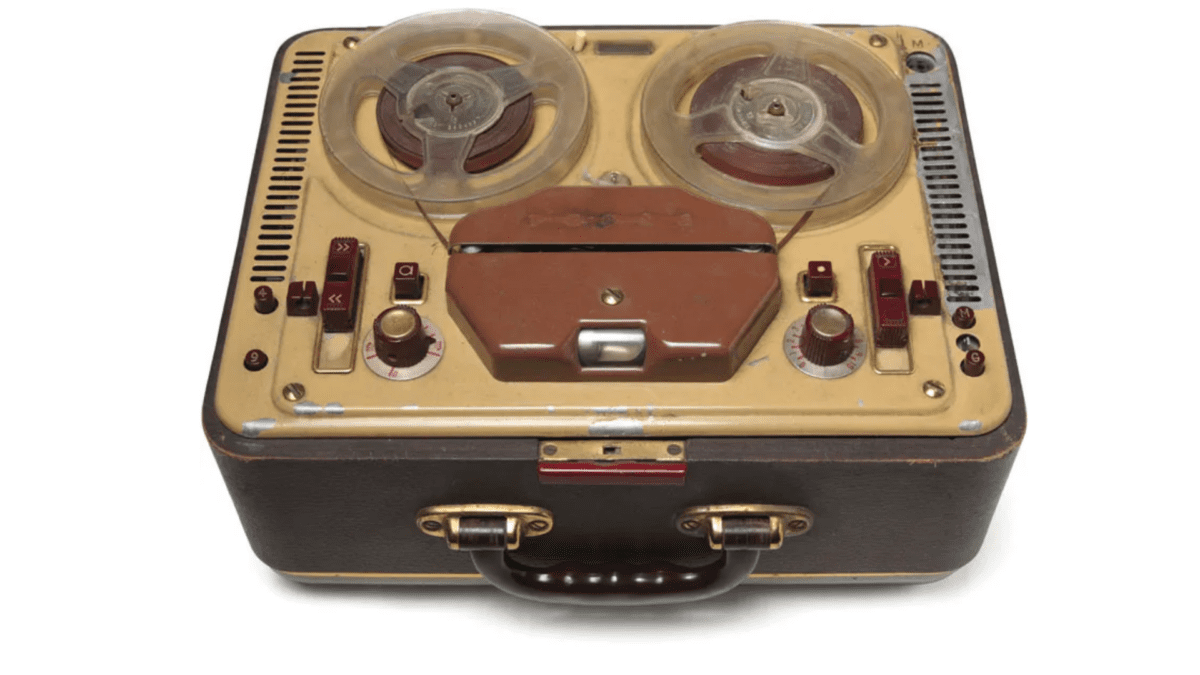You might be considering expanding your microphone collection and want to see what’s for sale these days or, perhaps, you are looking to get your first microphone for vocal recording and recording other instruments? I haven’t included any USB microphones but focused more on the professional end of the market.
In any case, here is a round-up of 8 of the best recording microphones for sale. These most popular microphones will complement any music production, home recording studio, professional studio or live performance in the music industry.
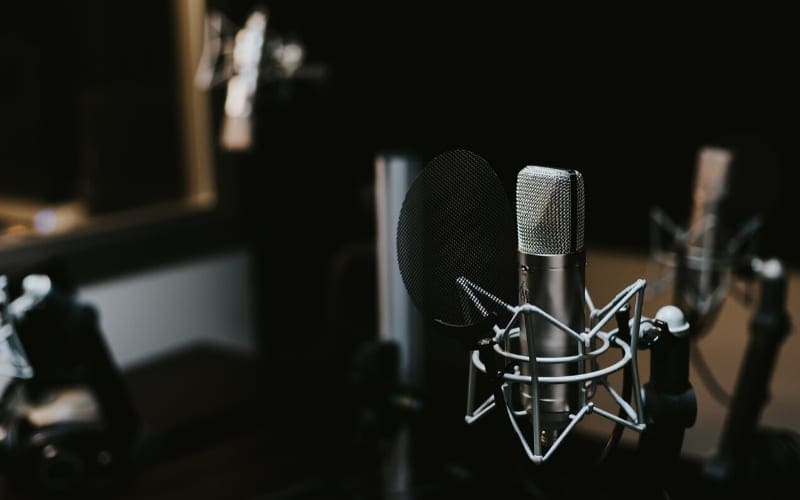
Which Recording Microphone is Best?
There are many great studio mics out there, and while this is not meant to be a comprehensive or be-all-end-all list, it does present some great and sometimes overlooked options to consider, across various price points and usages, starting with the most affordable first to the most expensive last.
With that said, you’ll notice technical details vary from microphone to microphone, though I have strived for consistency, as manufacturer-reported specifications vary.
The specs relayed here are close enough for rough apples-to-apples comparison and give an idea, along with the text description, of each mic’s strengths and weaknesses. With this information, you’ll be better equipped to buy the right mic for your needs.
Before we get started with the list itself, let’s do a brief run-down for beginners to get acquainted with the landscape of microphone technology.
Understanding Different Recording Microphone Types
There are three basic types of microphones: dynamic, condenser and ribbon.
Condenser microphones often require power, called phantom power and (older)
Ribbon mics can be damaged if fed this phantom power, so be careful when switching them on or off.
Dynamic mics work well with loud sound sources like drums and guitar amps and tend to be strong in representing mid-range frequencies. Condenser mics are bright and handle higher frequencies and details of relatively quiet sound sources well.
This might include vocals, acoustic instruments or capturing the sound of a room’s ambience. Ribbon mics tend to sound warm and pick up the natural sound of an instrument or voice quite well but tend to not do so well with loud sound sources.
Recording Microphones have different frequency responses, that is, inherent equalization patterns. Some are relatively flat in a particular range of frequencies (see the Rode M3 below for example), and would be good to capture a more natural, unadulterated rendition of a particular instrument, voice or setting.
Other mics intentionally boost particular frequencies, making them particularly good at recording sources which are known for those same frequencies, such as the lows and click of a kick drum (see the Audio-Technica AE2500). Or the mid-range frequencies of an electric guitar or a particularly-suited vocalist’s performance (see the Shure SM57), accentuating the most appealing frequencies.
Note that choosing the right recording microphone for any given purpose is more of an art than a science. The factors mentioned above are the tip of the iceberg and should indicate just how complicated this process can get.
Nevertheless, as an art, whatever works, works, so trust your ears above all else so long as they’re trustworthy. PS check the Rode NTK as well.
DAWs, Preamps, Audio Interfaces & Beat Makers
Your current DAW won’t affect your decision, but it is worth considering purchasing a mic preamp. Also check out our handy review of the best audio interfaces and beat maker on the market to combine with your purchase.
So, without further ado, let’s get you into the reviews!
1. MXL DX-2
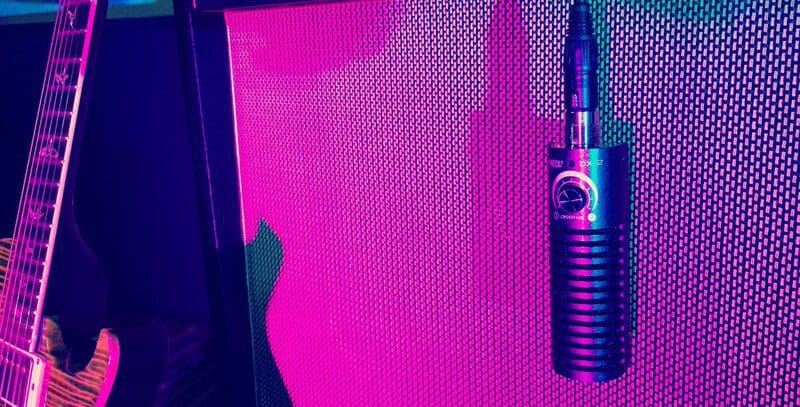
Pricing £62 GBP / $80 USD – Rating 4.0 out of 5
While not a brand people think of in terms of the best mics, MXL provides surprising quality and value for its price and the DX-2 gets a generally positive review from Sound On Sound (SOS) and so, as our most affordable option, is included here.
The DX-2 is a flat-faced, side-address dual capsule recording microphone with a conveniently-located cross-fade knob on the back of the mic which makes it ideal for miking a guitar speaker cabinet closely.
In terms of limitations, this is obviously not a top-quality mic since a large part of the attraction is the price, and so there are much better options, given the coin, for applications which require more pristine high-end representation, just as one example.
+ Type: dynamic dual capsule
+ Polar pattern: super-cardioid and cardioid
+ Freq. range: 50Hz – 14kHz
+ Output impedance: 400Ω/600Ω
+ Sensitivity: -52.0 dB re 1V/Pa, -54dB re 1 V/Pa
+ Signal to noise: unavailable
+ Max. SPL: unavailable
+ Additional Features: dual capsule
+ Common Usage: snare, guitar amp
2. Shure SM57
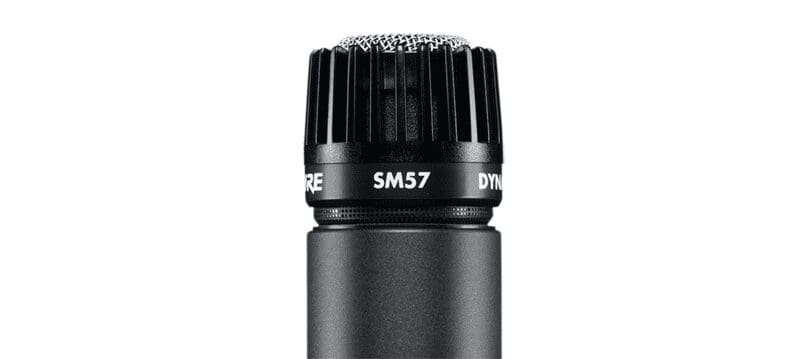
Pricing £88 GBP / $113 USD – Rating 4.2 out of 5
The SM57 and its fraternal twin, the SM58, are classic staples in recording studios and home studio setups as it’s a go-to for snare, tom and guitar amp micing as well as for live vocals.
It’s sturdy, its sound can be heard on many, many recordings and it’s one of the most affordable high-quality microphones available, at £88/$113. One of the unique strengths of this mic is its high SPL handling, i.e., its ability to handle loud sound sources, and hence its frequent usage with guitar amps and drums.
The SM57’s narrow cardioid polar pattern rejects more off-axis sound than a recording microphone with wider patterns, which suits it to capture snares while rejecting hi-hats. As far as limitations, the SM57 does alright on many things and so it’s not great at any one thing – for specific applications, there might be a better-resulting alternative.
+ Type: dynamic
+ Polar pattern: cardioid
+ Freq. response: 40Hz – 15kHz
+ Output Impedance: 150Ω rated (310Ω actual)
+ Sensitivity: -56.0dBV/Pa (1.6mV) @ 1kHz, open-circuit voltage
+ Common usage: snare, guitar amp
3. Rode M3 Recording Microphone
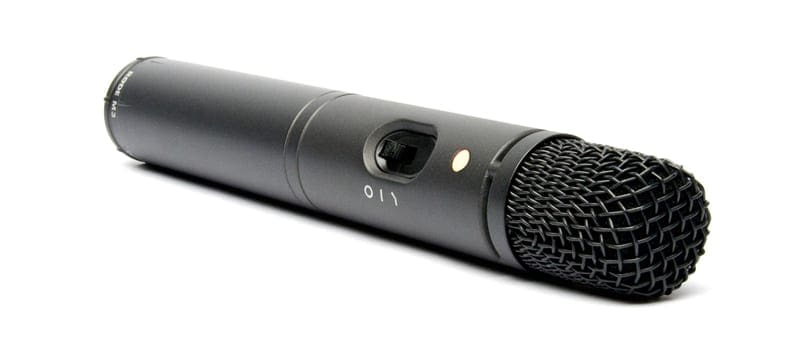
Pricing £115 GBP / $149 USD – Rating 4.1 out of 5
With a fixed cardioid pattern and the ability to power itself with a 9V battery, the Rode M3 is a general-purpose recording microphone. It has an LED indicator for battery conditions and a second-order high-pass filter (12dB/octave) at 80Hz.
There is also a three-position pad switch which provides 0, 10 or 20dB of attenuation, allowing the M3 to close-mic loud sources. The frequency response chart below shows a gently-sloping roll-off at the low end, flatness between 300Hz and 3kHz, a couple of boosts at around 6kHz to 7kHz and 10kHz and finally a roll-off between 15kHz and 20kHz.
Sound On Sound state that the flat portion of the response is…
“This is an impressively flat and extended response, especially compared with AKG’s C1000S (probably the closest comparable mic), or any similarly-priced moving coil (dynamic) microphone.”
It’s definitely one mic worth considering. One of the downsides of this recording microphone is the fact that there are no markings on the switch, it doesn’t cut through for vocals like other mics and the excessive length of the body of the mic might be off-putting.
+ Type: ½” condenser 24-48V phantom power and 9V battery power
+ Polar pattern: cardioid
+ Freq. range: 40Hz – 20kHz
+ Output impedance: 200Ω
+ Sensitivity: -40.0dB+/- 3dB re 1V/Pa @ 1 kHz (6.3mV/Pa @ 94db SPL)
+ Signal noise ratio: 73dB SPL
+ Max. SPL: 142dB
+ Additional Features: Selectable high-pass filter (@ 80 Hz -12dB/Oct); -10dB and -20dB pad, 9V battery power
+ Common usage: vocals, acoustic instruments, drum overheads, drum close mic, guitar amps
The frequency response of the M3 shows a gently-sloping roll-off at the low end, flatness between 300Hz and 3kHz, a couple of boosts at around 6kHz to 7kHz and 10kHz and finally a roll-off between 15kHz and 20kHz.
4. Blue Bluebird SL
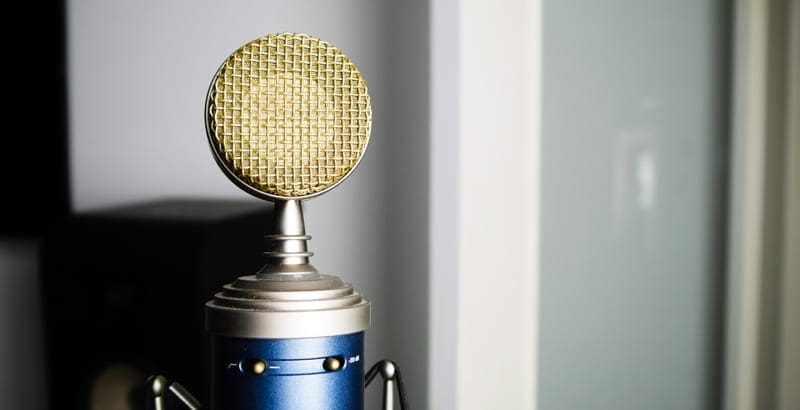
Pricing £185 GBP / $239 USD – Rating 4.3 out of 5
A large-diaphragm condenser, the Bluebird SL provides high-frequency clarity, smooth mid-frequencies and rich lows and is intended for a wide variety of uses, including vocals, electric and acoustic guitars, drums and orchestral instruments.
A -20dB pad helps facilitate recording loud sources and a high-pass filter minimizes mud and rumble. Of note for potential concern, this mic’s chassis screen connection might cause ground-loop issues.
Nevertheless, this studio recording microphone is a solid go-to for a wide variety of functions, making it a potential workhorse for any studio.
+ Type: large-diaphragm condenser
+ Polar pattern: cardioid
+ Freq. range: 20Hz – 20kHz
+ Output impedance: 50Ω
+ Sensitivity: 28.5mV/Pa
+ Signal noise ratio: 82.3dB (A-weighted)
+ Max. SPL: 138dB (0.5% THD @ 1kHz)
+ Additional Features: high-pass filter (100Hz), -20dB pad, 48V phantom power
+ Common Usage: Great microphone for recording vocals, guitar amp, acoustic guitar, strings, drums, woodwind and brass
5. Sennheiser MD 421-II Microphone
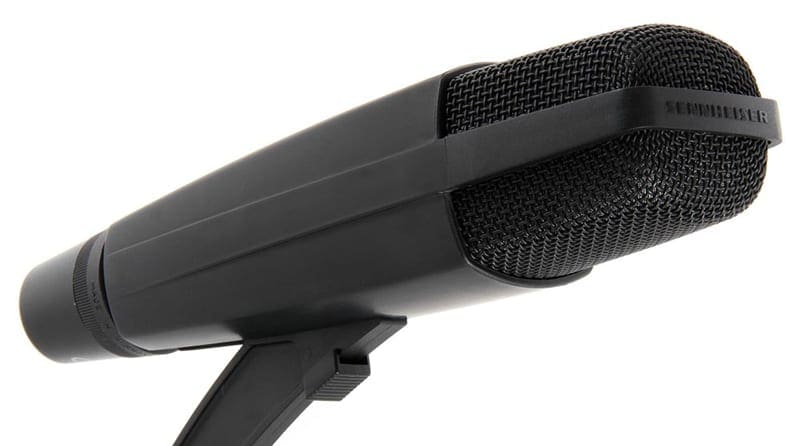
Pricing £294 GBP / $379 USD – Rating 4.5 out of 5
Originally introduced in 1960 with improvements over the years, Sennheiser’s MD 421-II recording microphone features versatility, pronounced directivity where the bleed is an issue and internal bass tubes which provide an accurate low-end response. Even at close range where proximity effect is an issue!
It also handles exceptionally high sound pressure and exhibits effective feedback rejection. On the downside, there are various criticisms to be found about the clip that comes with the MD 421-II to secure it to a mic stand.
Common applications include studio or live performance applications of most instruments, particularly guitar and drums, group vocals and radio broadcasts.
+ Type: dynamic
+ Polar pattern: cardioid
+ Freq. range: 30Hz – 17kHz
+ Output impedance: 200Ω
+ Sensitivity: 2 mV/Pa +/- 3dB @ 1kHz
+ Additional Features: 5-position bass control
+ Common usage: guitar, drums, group vocals, radio broadcasts
6. Audio-Technica AE2500 Dual-Element
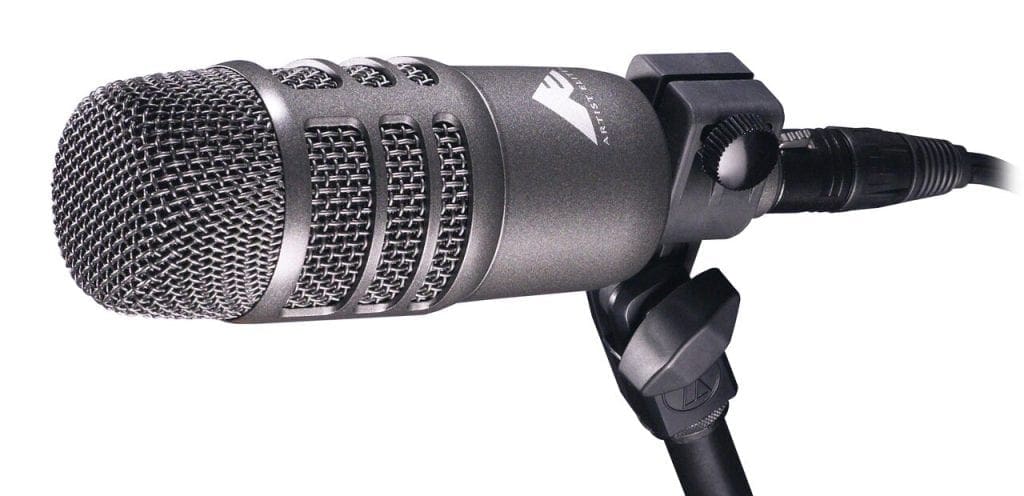
Pricing £426 GBP / $549 USD – Rating 4.2 out of 5
The AE2500 recording microphone contains two capsules – an electret and a dynamic. Shock-mounted side-by-side, which maintains an accurate phase relationship, something that’s not easy to do with separate mics. One of the main advantages of this mic’s design is its uniqueness.
While certain mics make every kick drum sound the same, this mic, with its flat electret capsule influencing the more typically-responsive dynamic capsule, provides a more neutral, faithful reproduction of the kick drum being recorded. One potential drawback of this mic is the fact that two capsules make it more expensive than other good options for the same use.
However, if the benefits of having two capsules sound appealing to you, then the AE2500 might be a good option.
+ Type: condenser, dynamic
+ Polar pattern: cardioid
+ Freq. range: 20Hz – 17kHz, 30Hz – 10,000kHz
+ Output impedance: 100Ω (condenser), 600Ω (dynamic)
+ Sensitivity: -40.0 dB+/- 3dB re 1V/Pa @ 1 kHz (6.3mV/Pa @ 94db SPL)
+ Signal noise ratio: 70dB, 1kHz @ 1Pa (condenser)
+ Max. SPL: 148dB, 1kHz @ 1%THD (condenser); 158dB w/10dB pad (nominal)
+ Additional Features: dual-element
+ Common Usage: kick/bass drum
7. AKG C414 XLII
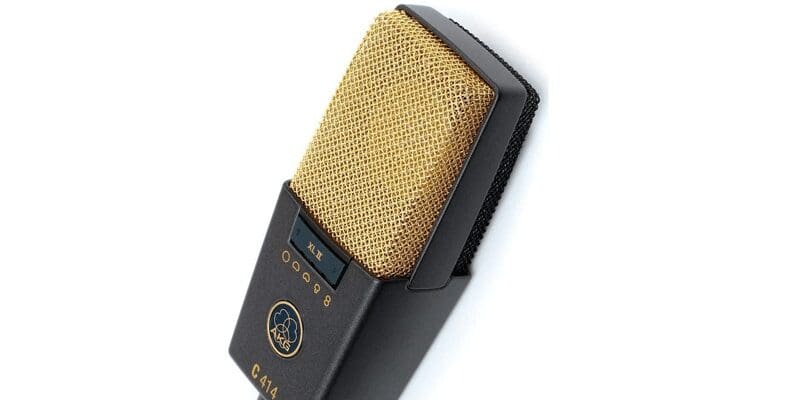
Pricing £620 GBP / $799 USD – Rating 4.5 out of 5
With 9 polar patterns to choose from, this mic is highly adaptable to a broad array of situations. The C414 XLII has been improved from previous versions by a slight presence boost and by providing the spatial reproduction capability of the famed AKG C12 microphone.
This is all to say the C414 XLII is great for making lead vocals and solo instruments stand out in detail in even a very dense mix. Aside from the price being a bit of a barrier to many just starting out, the LED could cause problems in film and television applications.
It’s nonetheless great for classical music, drum ambience and other ambience- or room-oriented miking.
+ Type: 1” large-diaphragm condenser 48V phantom power
+ Polar pattern: multi-pattern (Omni, wide cardioid, cardioid, hyper-cardioid, figure-8)
+ Freq. range: 20Hz – 20,000kHz
+ Output impedance: 200Ω
+ Sensitivity: 23mV/Pa (-33dBV+/-0.5dB)
+ Signal noise ratio: 88dB re 1 Pa (A-weighted)
+ Max. SPL: 200/400/800/1600 Pa 140/146/152/158 dB SPL (0/-6/-12/-18 dB pre-attenuation)
+ Additional Features: three switchable bass-cut filters and pre-attenuation pads
+ Common usage: Lead vocal and solo instrument, ambience
8. Neumann KM184
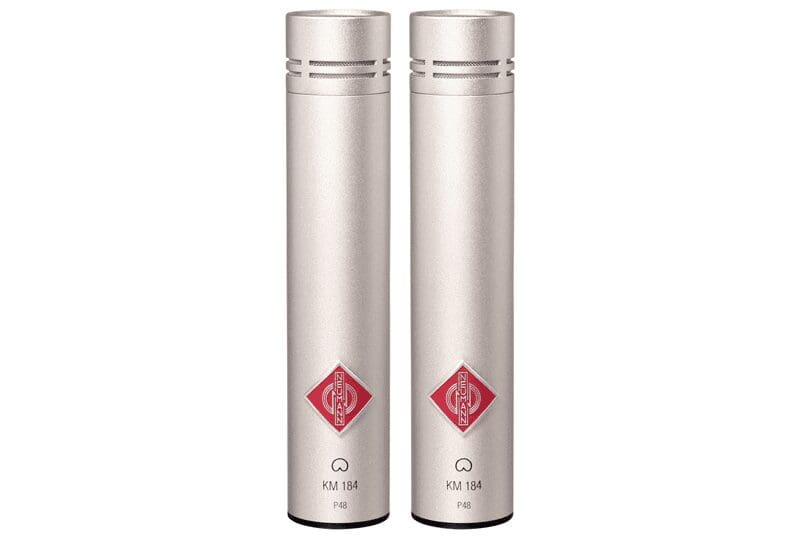
Pricing £620 GBP / $799 USD – – Rating 4.2 out of 5
Great for recording cymbals and percussion due to its high (138dB) SPL capability. The KM184 is also known for its quietness and so, also is good for acoustic guitar and orchestral instruments.
It can be used in a stereo overhead configuration when paired with another KM184, to bring out detail in drums or acoustic instruments. It also features good rejection of bleed from competing for sound sources.
Some feel the KM184 can be a bit harsh or too bright if used close and on-axis with some sources so it might be best treated as a speciality mic. If you need a mic which has great high-end representation, this is an excellent choice. PS do check out the Neumann TLM 102 as well
+ Type: small-diaphragm condenser
+ Polar pattern: cardioid pickup pattern
+ Freq. range: 20Hz – 20kHz
+ Output impedance: 50 Ω
+ Sensitivity: 15mV/Pa +- 1 dB @ 1kHz into 1kohm
+ Signal noise ratio: 72dB CCIR/81 dB A-weighted (re. 94dB SPL)
+ Max. SPL: 138dB THD 0.5%
+ Common usage: cymbals, percussion, acoustic guitar, orchestral instruments
Hopefully, this breakdown list has given you a good idea of the relative strengths, weaknesses and best uses for each of these microphones. Hopefully, it’s also informed your decision-making process if you are on the hunt for a microphone.
Where to get a Recording Microphone?
Here are some good US & UK sellers online that sell these featured above and a wider range to choose from.
The Guitar Centre (USA), Amazon (USA), Best Buy (USA), Andertons (UK), Amazon (UK)
There are other established mic equipment brands in the market worth checking out! Ones to mention are the SE Electronics SE2200a MK2, Earthworks, Audix, DPA, Telefunken, Schoeps, Soyuz, Avantone Pro, Warm Audio, Behringer, Lauten Audio, Miktek, Golden Age Project, Aston Microphones, Mojave Audio, Bock Audio, Austrian Audio, Crown, Studio Projects, Electro-Voice (EV), Manley, PreSonus, Samson, Slate Digital, Sony, Acacia, Chandler Limited, Daking, Galaxy Audio, MicW, Rupert Neve Designs, Soundlux, Aspen Pittman Designs, Dbx, Focusrite, IK Multimedia, Peavey, Sonarworks, Sonuus, Tonelux, Townsend Labs and Universal Audio.
Additionally, consider reading up on preamps and a carry case, which is often paired with microphones for best recording results and protecting your asset.
There are different common placements and positionings for various sources and never be afraid to take the time to monitor the sounds you’re getting and adjust your mic position accordingly to suit your taste before commencing with the performance and or recording.
Closing Thoughts On The Best Recording Microphone
Overall, the best recording microphone for you will depend on your specific needs and budget. Whether you’re looking for a professional-grade microphone for your studio or a budget-friendly option for your home recordings, there’s a microphone out there that will help you get the most out of your recordings. With the right microphone, you’ll be able to capture all the details of your recordings and create a truly unique sound.
I hope you enjoyed this article and advice and that you’ve now decided on the best recording microphone for you! Do share with your network and thank you for reading.

